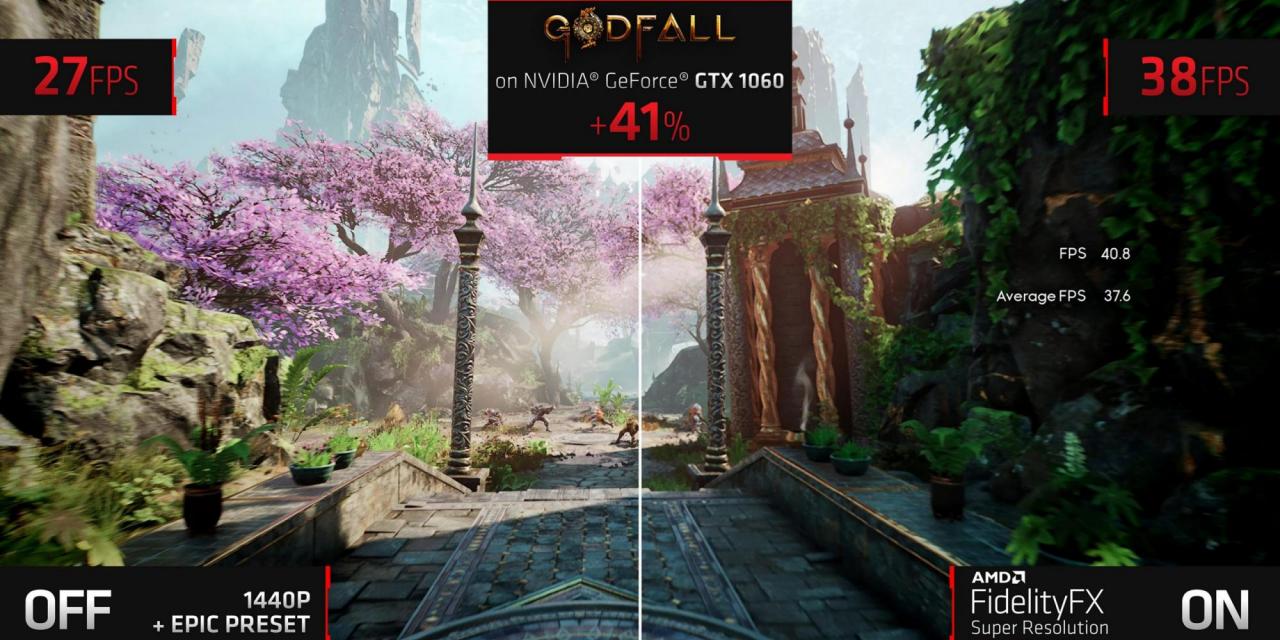
AMD's alternative to DLSS is already proving popular, despite not officially launching until June 22. The dynamic upscaling technology has reportedly acquired the interest of 10 game studios and engines already, and supports a wide range of hardware, including AMD's own RDND2 and RDNA1 cards, alongside older Vega and RX 500 Polaris GPUs. They're joined by every Nvidia graphics card since the 10th-generation, and now Intel may add support for FSR to its next-generation dedicated Xe-HPG graphics cards too.
FSR works a little differently to DLSS, and the results based on an early tech showcase at Computex are a little underwhelming, at best. However, they're far from awful — more like a slightly improved DLSS 1.0 than 2.0. But the performance advantages are impossible to ignore. It's the wide support that could be the winning formula for FSR, because where DLSS is better suited to high-end GPUs which don't necessary need that additional performance advantage, FSR seems much more targeted at letting low end GPUs deliver playable frame rates in modern games.
In one given example in the game Godfall, AMD showed an Nvidia GTX 1060 (still the most popular GPU in use on Steam), averaging just 27 FPS at 1440p Epic detail, but with FSR turned on, it was hitting 38 FPS on average. That's still not great, and it would probably be better to lower the resolution and detail levels for an FPS boost on a card like that, but it shows that FSR can make a big impact, even if it does appear to lose a fair amount of detail in static shots. It's not quite as obvious in motion.
Definitely looking at it - the DL capabilities of Xe HPG architecture do lend to approaches that achieve better quality and performance. We will definitely try to align with open approaches to make ISVs job easier..
— Raja Koduri (@Rajaontheedge) June 2, 2021
Now Intel's Raja Koduri has said he's investigating getting FSR on Intel's FSR technology, potentially unlocked greater performance for the upcoming dedicated GPUs, and even opening the door for the upscaling tech to work on Intel's integrated graphics too.
Now that could make a real impact.
